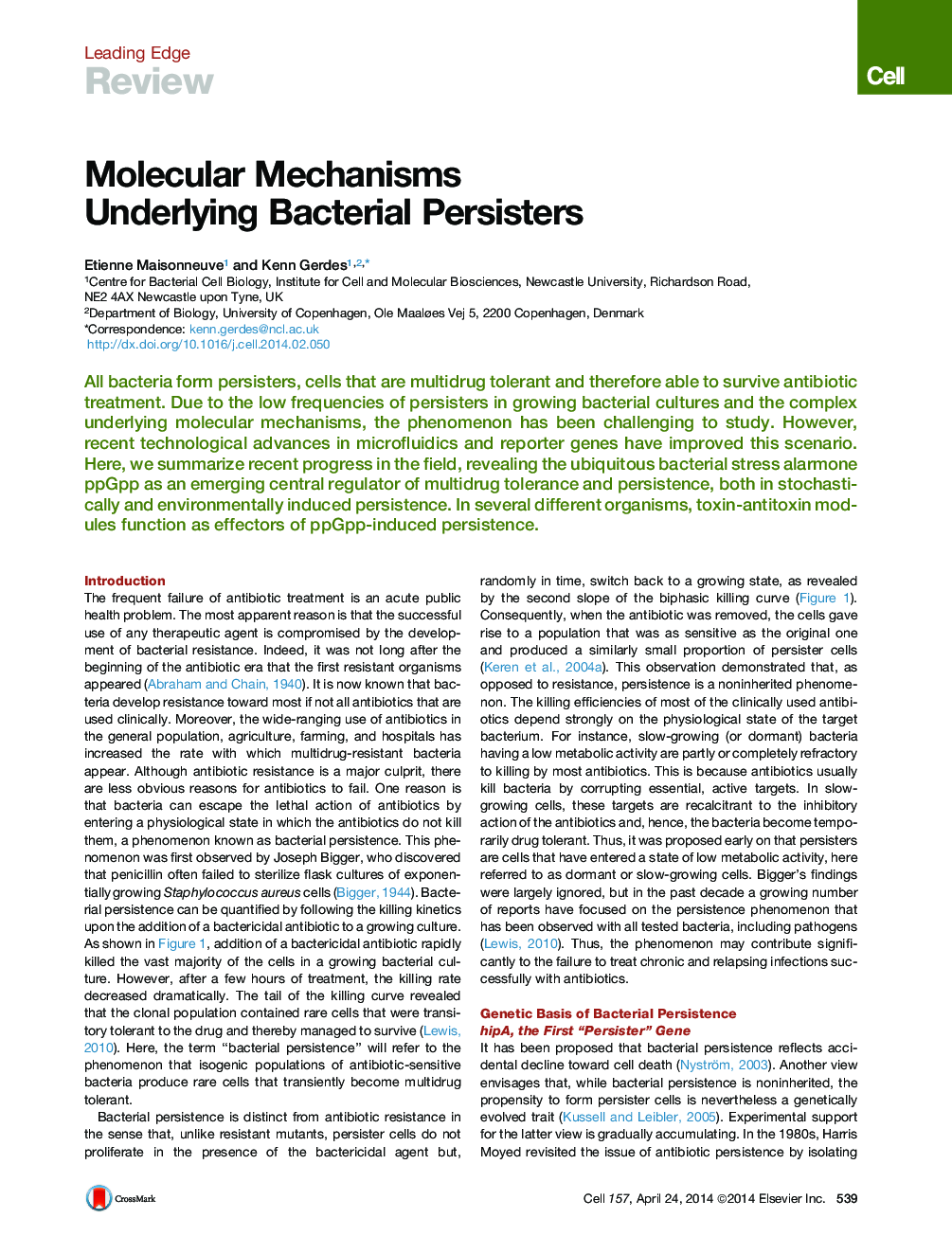| Article ID | Journal | Published Year | Pages | File Type |
|---|---|---|---|---|
| 2035533 | Cell | 2014 | 10 Pages |
Abstract
All bacteria form persisters, cells that are multidrug tolerant and therefore able to survive antibiotic treatment. Due to the low frequencies of persisters in growing bacterial cultures and the complex underlying molecular mechanisms, the phenomenon has been challenging to study. However, recent technological advances in microfluidics and reporter genes have improved this scenario. Here, we summarize recent progress in the field, revealing the ubiquitous bacterial stress alarmone ppGpp as an emerging central regulator of multidrug tolerance and persistence, both in stochastically and environmentally induced persistence. In several different organisms, toxin-antitoxin modules function as effectors of ppGpp-induced persistence.
Related Topics
Life Sciences
Biochemistry, Genetics and Molecular Biology
Biochemistry, Genetics and Molecular Biology (General)
Authors
Etienne Maisonneuve, Kenn Gerdes,
